Ryogoku, the spiritual home of sumo wrestling, offers a captivating guided tour that immerses visitors in the rich history and deeply-rooted traditions of this revered sport. Expert guides lead the way through sumo stables, shrines, and the iconic Ryogoku Kokugikan, providing insider insights that foster a profound appreciation for sumo’s intricate customs. The tour culminates with a delectable chanko-nabe lunch, a crucial part of a wrestler’s training regimen, further illuminating the dedication and discipline at the heart of this fascinating cultural experience. Those seeking to truly understand the essence of sumo won’t want to miss this immersive exploration.
This experience made our list of the 25 Best Lunch Experiences In Tokyo.
Key Points
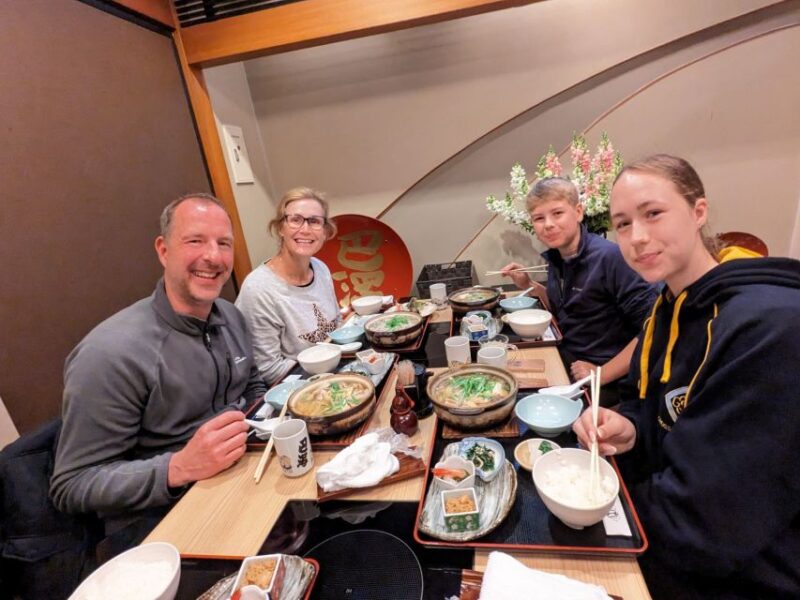
- Immersive exploration of sumo’s rich history, cultural traditions, and the community that sustains it as a revered national treasure.
- Insights into the daily life, rigorous training regimes, and hierarchical structure of elite sumo wrestlers at the Hakkaku-beya and Kasugano-beya stables.
- Spiritual connection with sumo’s timeless traditions through visits to the Nominosukune Shrine and the Ekō-In Buddhist temple.
- Experience the iconic Ryogoku Kokugikan arena, the spiritual home of sumo, and explore the Ryōgoku Edo Noren for a taste of authentic Edo-period ambiance.
- Indulge in the renowned Tomoegata Chanko-nabe, a nutrient-dense hot-pot dish that is a crucial part of a sumo wrestler’s training regimen.
Exploring Sumo’s History and Culture
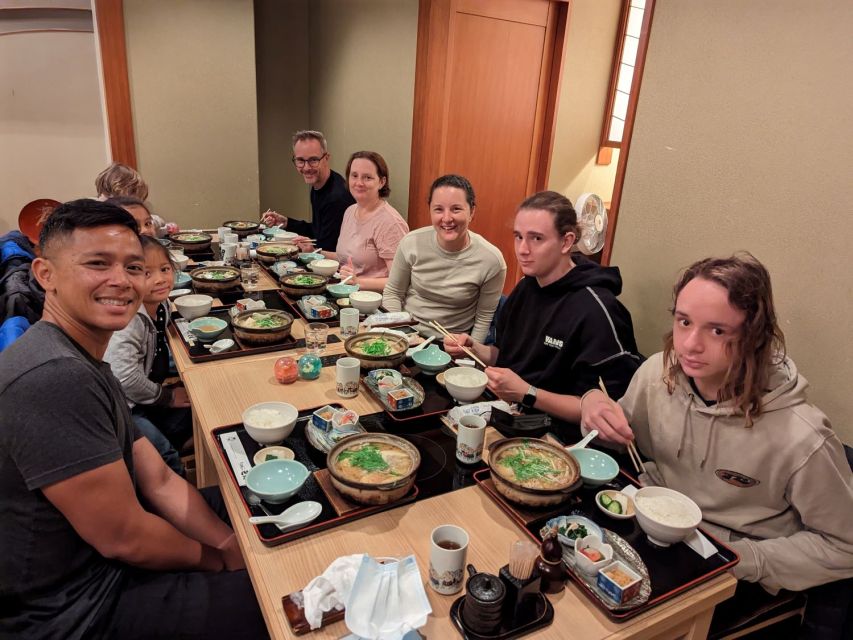
The guided tour provides visitors an immersive exploration of sumo’s rich history and deeply-rooted cultural traditions, inviting them to explore the captivating world of this iconic Japanese sport.
At the Ryogoku Kokugikan, the spiritual home of sumo, guests will learn about the sport’s storied past, from its ancient religious origins to its evolution as a national pastime.
They’ll also gain insights into the sumo wrestlers’ rigorous training regimes and hierarchical rankings as they visit the Hakkaku-beya and Kasugano-beya stables.
Throughout the tour, the expert guide shares fascinating anecdotes, fostering a deeper appreciation for sumo’s intricate customs and the community that sustains this revered national treasure.
Loving the local insights? Here are more guided experiences we recommend in Tokyo
Visiting Hakkaku-beya Sumo Stable
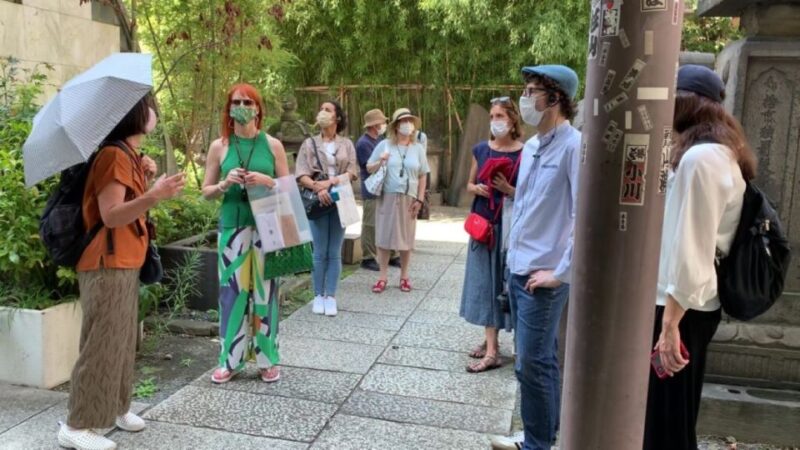
Stepping inside the Hakkaku-beya sumo stable, visitors find themselves immersed in the centuries-old traditions that define the daily life of these elite athletes.
The guide expertly navigates the group through the stable’s hallowed halls, sharing insights into the rigorous training regimes and hierarchical structure that shape the sumo wrestler’s journey.
Visitors catch a glimpse of the wrestlers as they go about their routines, meticulously perfecting their techniques and maintaining the discipline that has sustained the sport for generations.
The guide explains the significance of the stable’s architectural features and rituals, fostering a deeper appreciation for the profound respect and dedication that permeates the world of sumo.
Paying Respects at Nominosukune Shrine
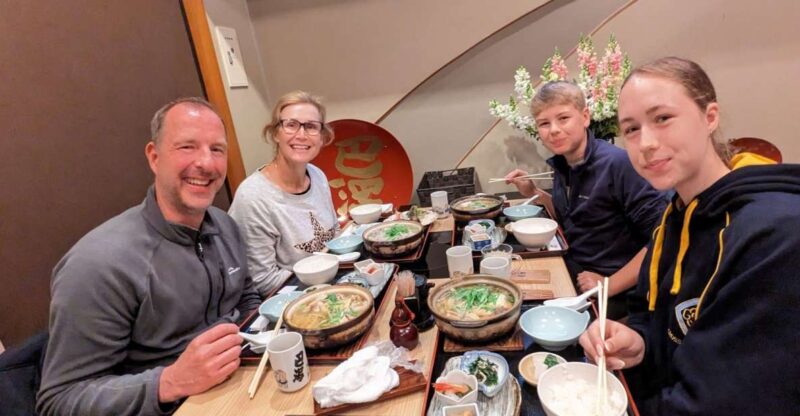
From the sumo stable, the group now turns its attention to Nominosukune Shrine, a revered site that honors the legendary sumo wrestler Nomi no Sukune. As they approach the shrine’s ornate gates, the guide explains the deep spiritual significance this hallowed ground holds for sumo practitioners and enthusiasts alike.
The group learns that Nominosukune Shrine:
-
Commemorates Nomi no Sukune, considered the father of modern sumo wrestling.
-
Serves as a sacred place for sumo wrestlers to pray for strength, health, and victory.
-
Hosts an annual festival celebrating the sport’s rich heritage and traditions.
-
Provides a peaceful respite from the bustling streets, allowing visitors to connect with sumo’s timeless spirituality.
Experiencing Ryogoku Kokugikan
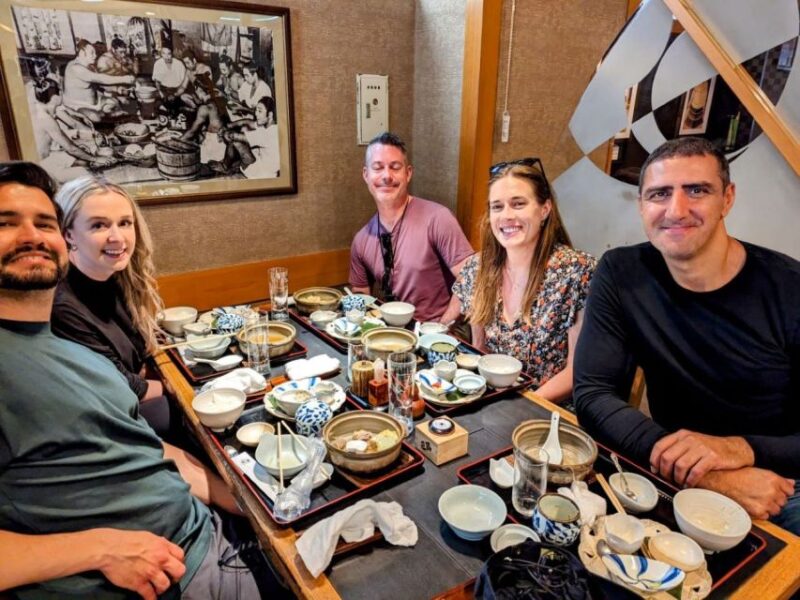
Departing the tranquil Nominosukune Shrine, the group now turns its attention to the iconic Ryogoku Kokugikan, the spiritual home of sumo wrestling in Japan.
This grand arena, which hosts the prestigious sumo tournaments, stands as a testament to the sport’s enduring legacy and captivates visitors with its rich history and cultural significance.
The guide explains the significance of the Kokugikan, its impressive architecture, and the rituals and traditions observed during the tournaments.
Visitors are invited to envision the electrifying atmosphere as they stand in the very space where sumo’s greatest champions have battled for supremacy.
This stop provides a profound understanding of sumo’s central role in Japanese culture and the deep reverence it commands.
More Great Thing To Do NearbyDiscovering Ryōgoku Edo NOREN
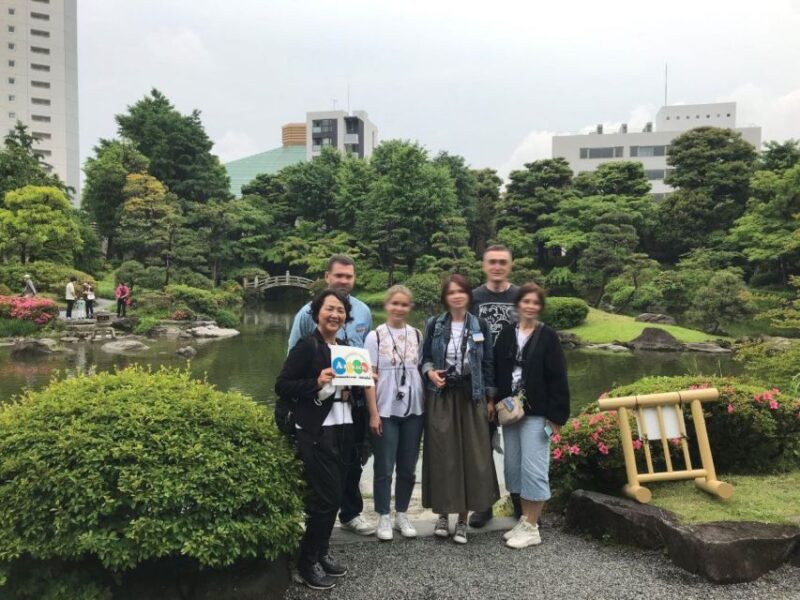
The group’s next stop takes them to the captivating Ryogoku Edo NOREN, a unique cultural landmark that immerses visitors in the rich history and traditions of Ryogoku. The guide illuminates the significance of this atmospheric space, which showcases the timeless ambiance of the Edo period through its meticulously preserved architecture and evocative design elements.
The Ryogoku Edo NOREN features:
- Wooden storefronts with traditional noren curtains
- Authentic Edo-style signage and shop displays
- A lively food court serving classic Ryogoku cuisine
- Cultural demonstrations and performances for guests
This immersive experience allows the group to step back in time and gain a deeper appreciation for the enduring legacy of Ryogoku’s sumo heritage.
If you're enjoying exploring Tokyo on foot, you'll love these other walking tours we recommend
- Tokyo: Must-Sees Attractions Private Walking Tour
- Tokyo: Full Day Private Walking Tour With a Guide
- Fully Customizable Private Walking Tour in Tokyo
- Tokyo: Become a Member of the Daikoku GT-R Car Club R35 Liberty Walk
- Tokyo City Walk Tour Visit Tokyo in One Day
- Tokyo Tsukiji Fish Market Food and Culture Walking Tour
Stepping Into Ekō-In
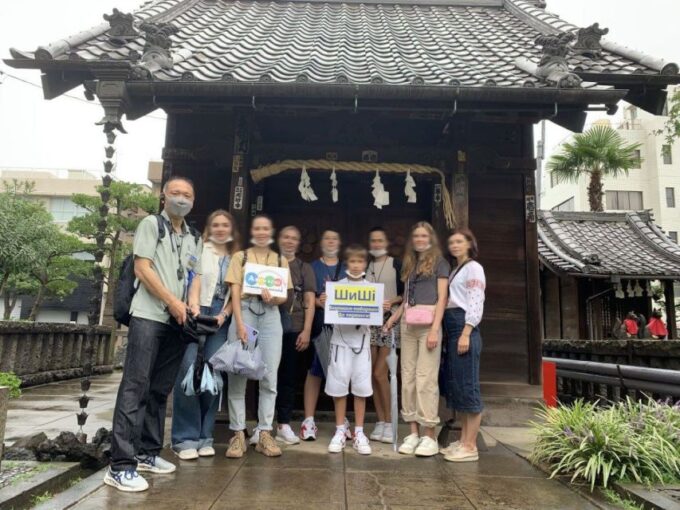
After exploring the captivating Ryogoku Edo NOREN, the group now turns its attention to Eko-in, another significant landmark in the heart of sumo town.
This venerable Buddhist temple dates back to the early 19th century and has long been associated with the sport of sumo. Visitors will learn about its rich history and the unique role it plays in the sumo community.
They’ll discover how Eko-in hosts sumo-related rituals and ceremonies, and how it provides a spiritual haven for wrestlers seeking guidance and support. The guide’s expertise brings this hallowed site to life, leaving the group with a deeper appreciation for the deep-rooted traditions that underpin the world of sumo.
Observing Kasugano-beya Sumo Stable
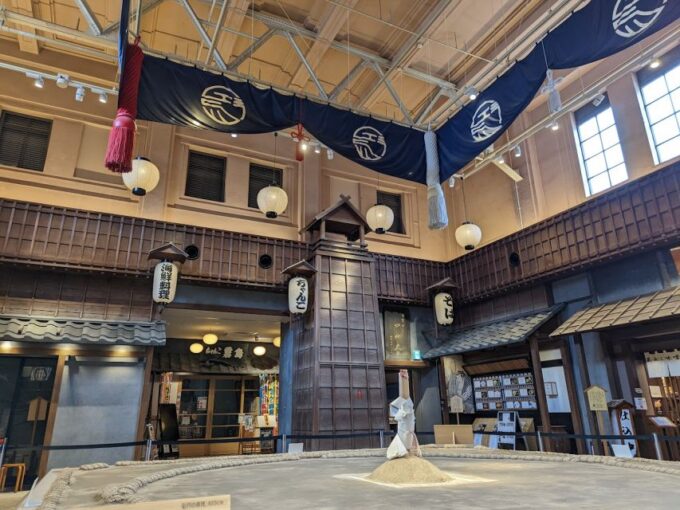
The group now turns its attention to Kasugano-beya, one of the most respected sumo stables in Ryogoku, where they’ll observe the daily training and rituals of these elite athletes.
As they approach the stable, they notice the distinct thud of bodyslams and the rhythmic chanting of the wrestlers.
The guide explains the key elements of sumo stable life:
- Strict hierarchical structure with the stablemaster at the top
- Rigorous training regimen involving hours of practice each day
- Unique rituals and traditions, like the purifying salt tossing ceremony
- Close-knit community where wrestlers live, eat, and train together
The group takes in the sights and sounds, gaining a deeper appreciation for the discipline and dedication required to become a professional sumo wrestler.
Indulging in Tomoegata Chanko Lunch
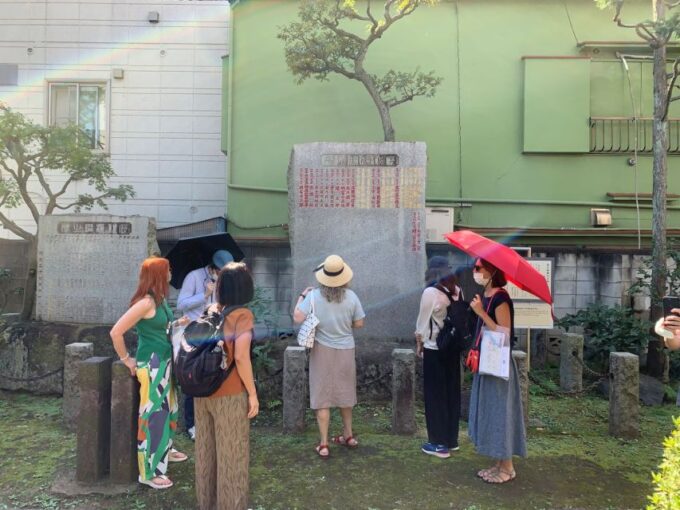
Having explored the rich history and culture of sumo in Ryogoku, the group now eagerly steps into Tomoegata Chanko, one of the most renowned chanko-nabe restaurants in the area.
The tantalizing aromas of the nutrient-dense hot-pot dish fill the air, whetting their appetites.
The expert guide explains that chanko-nabe is a crucial part of a sumo wrestler’s training regimen, providing the calories and protein needed to sustain their massive frames.
As the hearty stew simmers, the group learns about the unique ingredients and preparation methods that make this version of chanko-nabe so exceptional.
With each flavorful bite, they gain a deeper appreciation for the dedication and discipline of these elite athletes.
Frequently Asked Questions
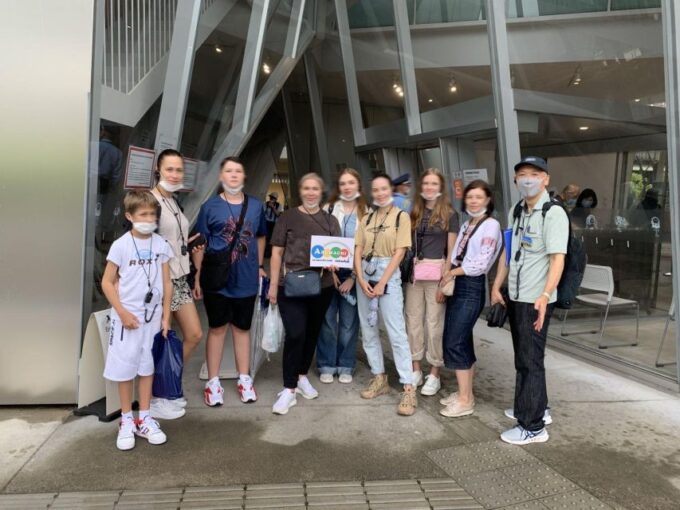
Can I Take Photos Inside the Sumo Stables?
No, visitors generally can’t take photos inside the sumo stables. They’re considered private spaces, and photography is prohibited to protect the wrestlers’ privacy and the integrity of their training routines.
Is It Possible to Meet and Interact With the Sumo Wrestlers?
Unfortunately, it’s generally not possible to meet or interact directly with sumo wrestlers during guided tours. Sumo stables maintain strict privacy and access is highly limited to protect the wrestlers’ training and daily routines.
How Often Do Sumo Tournaments Take Place in Ryogoku?
Sumo tournaments occur in Ryogoku several times per year. The most significant are the Grand Sumo Tournaments, which take place over 15 days in January, May, and September. These events draw large crowds to witness the ancient sport of sumo.
Is There a Dress Code Required for the Tour?
There is no dress code required for the tour. Participants can wear comfortable, casual clothing suitable for walking. The tour focuses on the history and culture of sumo, not on specific attire.
Can Vegetarian or Gluten-Free Options Be Provided for the Chanko-Nabe Lunch?
The tour provider can typically accommodate vegetarian or gluten-free dietary needs for the chanko-nabe lunch. Participants should notify the provider of any special dietary requirements when booking the tour to ensure appropriate accommodations can be made.
Recap
Immersing oneself in the captivating world of sumo, this tour offers an unparalleled experience. From exploring the spiritual home of the sport to indulging in the essential chanko-nabe lunch, visitors gain a profound understanding of sumo’s intricate traditions and the unwavering discipline of its wrestlers.
This comprehensive journey through Ryogoku’s sumo heritage provides an enriching and unforgettable glimpse into the heart of this revered Japanese art form.
You can check if your dates are available here:More Walking Tours in Tokyo
- Nezu Shrine and Yanaka Backstreet Walking Tour by Storyteller
- Tokyo Custom Private Walking Tour With Licensed Guide (4/8h)
- Tokyo: Harajuku Family Friendly Guided Walking Tour
- Tokyo Walking Tour : Sumo, Sushi, Tea, Temples and Tokyo Tower
- Tokyo Tsukiji Market Food and Culture Walking Tour
- Kamakura Walking Tour With Local Guide Including Hokokuji Temple
More Tours in Tokyo
- Tokyo: Shinjuku Local Bar Hopping Tour 3 Authentic Izakayas
- Tokyo Tsukiji Fish Market Food and Walking Tour
- Tokyo by Night Photography Tour
- 3hr Private E-Bike Cycling Tour in Tokyo, Starting at Your Hotel
- Tokyo Private Driving Tour by Car/Van – English Speaking Driver
- Customizable Private Tour in Mt. Fuji With Private Driver
More Tour Reviews in Tokyo
- Tokyo: Shinobi Samurai Premium EXP for Solo Travelers, 90min
- Mt Fuji Private Tour With English Speaking Driver
- Nerikiri Wagashi-Making With Tea Ceremony Review
- Tokyo 3-Hour Guided E-bike Cycling Tour of the Citys Hidden Gems
- Official Street Go-Kart Tour – Shinagawa Shop
- 【Open 1st Anniv.】Popular Sushi Making Class Near Tokyo Tower
Not for you? Here's more things to do in Tokyo we have recnetly reviewed
- 2 Best Craft Beer Tours And Tastings In Tokyo
- 20 Best 2 Day Tours In Tokyo
- 7 Best 3 Day Tours In Tokyo
- 6 Best 4 Day Tours In Tokyo
- 25 Best Cruises And Boat Tours In Tokyo
- 25 Best Food Tours In Tokyo
- 20 Best Full-Day Tours In Tokyo
- 15 Best Helicopter Flights And Tours In Tokyo
- 2 Best BBQ Experiences In Tokyo
- 5 Best Coffee Tours And Tastings In Tokyo
- 25 Best Lunch Experiences In Tokyo
- 12 Best Massage And Relaxation Services In Tokyo
